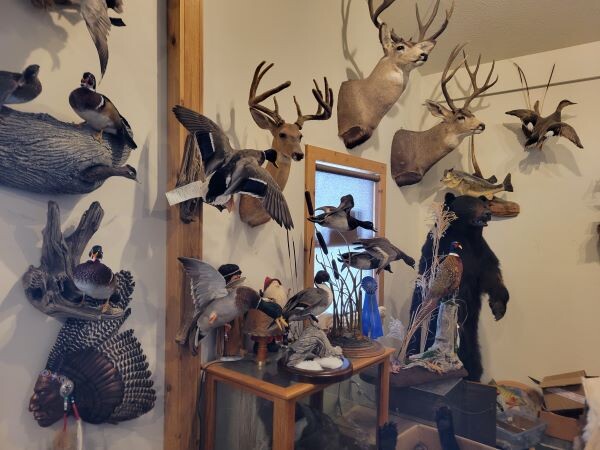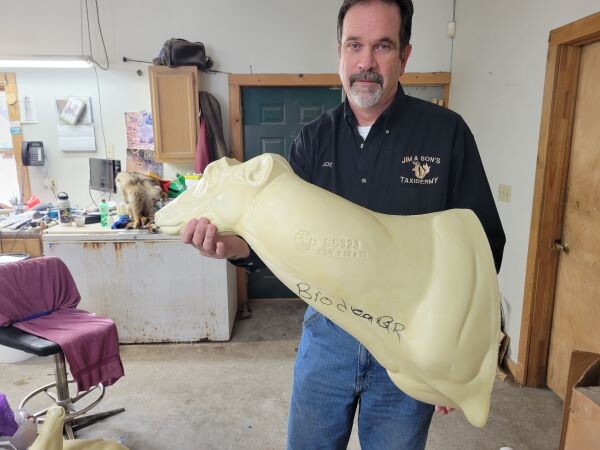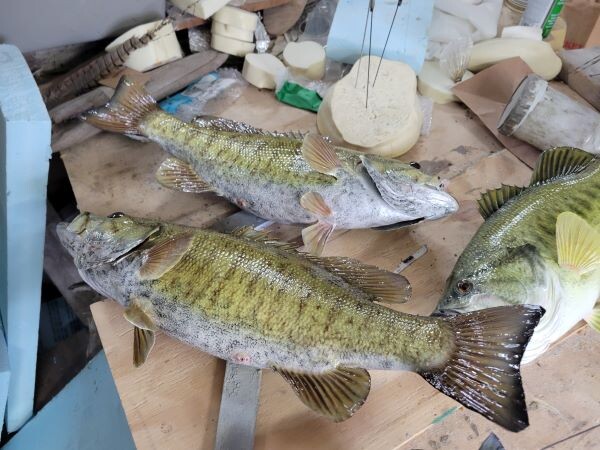Image


In the quiet woodlands a few miles south of Chelsea, a family legacy has taken root and evolved into a thriving full-time business that boasts a staggering century of combined experience in the art of taxidermy.
Jim Krichbaum, the patriarch of Jim & Sons Taxidermy, has dedicated 57 years of his life to this craft, having started his journey back in 1967. His son, Joel Krichbaum, follows in his father's footsteps with 43 years of experience. Together, they have crafted a name synonymous with excellence in their unique field.
Jim & Sons Taxidermy, the Krichbaum family business, is a story of evolution, the intricate process and artistry involved in taxidermy, and the enduring bond of a father and son.
 The shop’s showroom is a menagerie of their best work over the years. Photo by Doug Marrin.
The shop’s showroom is a menagerie of their best work over the years. Photo by Doug Marrin.The business started as so many great enterprises do – unintentionally. Jim Krichbaum recalls their humble beginnings, "I love to hunt and fish. I teased my wife that I would like to mount the first fish I caught over five pounds. Well, I caught a five-pound, two-ounce bass and had it mounted. I got interested in taxidermy, and I thought this would be something fun to do. I started it as a hobby, and it just built up from there."
It wasn't long before young Joel joined his father in the shop. Jim explains, "Joel started helping me when he was 12, doing little odds and ends. When he graduated from high school, he said he wanted to take the business over. And so, he did, and he's been self-employed ever since high school."
 Joel holds a popular whitetail mount over which the hide will be stretched after tanning. Photo by Doug Marrin.
Joel holds a popular whitetail mount over which the hide will be stretched after tanning. Photo by Doug Marrin.“I was also interested in the outdoors, and I was just fascinated, I think, by the artistic part of taxidermy and working with the animals and bringing them back to life,” says Joel. “And so, I guess that drew me in, and I've always liked that part. of it.”
While the number of hunters in Michigan continues to decline, the Krichbaums are busier than ever in their niche trade. Joel explains, “Taxidermy is a dying art. There’s not many of us around. I believe we’re the only full-time taxidermists in Washtenaw County. We’ve got a pretty good reputation, and we’re so busy we’ve only done work for repeat customers for the last four years.”
 Jim just finished painting the color and markings for this latest catch. Photo by Doug Marrin.
Jim just finished painting the color and markings for this latest catch. Photo by Doug Marrin.The Krichbaums' dedication and curiosity to their craft are unwavering, as evidenced by their continuous commitment to mastering the art of taxidermy. Joel explains, "The process is always changing. The mannequins are getting better. We're constantly learning, trying to improve ourselves."
Taxidermy is indeed an art that requires meticulous attention to detail. Whether it's mounting a deer or recreating the vibrant colors of a fish, it's a process that unfolds over several months, involving numerous steps. As Jim puts it, "Everything we do in here, no matter what it is, has to have some sort of painting done on it because anytime you have flesh, when it dies, it loses its color."
 The pair have mounted many exotic animals including caribou, zebra, musk ox, hippo, mountain goat, and cape buffalo. Here is perhaps their most unusual mount – a 15-foot saltwater crocodile. A younger Jim for scale. Photo: Jim & Sons Taxidermy.
The pair have mounted many exotic animals including caribou, zebra, musk ox, hippo, mountain goat, and cape buffalo. Here is perhaps their most unusual mount – a 15-foot saltwater crocodile. A younger Jim for scale. Photo: Jim & Sons Taxidermy.Joel points to his dad as the real artist who mounts the birds and fish. He explains a fish loses all of its color in the preservation process. The taxidermist puts all the color and markings back on with an airbrush, paintbrush, and finger painting. Jim has won awards for his work, but the pair haven’t competed for years. They just don’t have the time.
Joel further emphasizes the artistic aspect, comparing it to custom painting, "It's like somebody doing a custom painting for a person. This is somebody's trophy. It's a memory for them. You're recapturing this memory."
Their dedication extends to conservation as well. Jim emphasizes, "I feel that you should eat what you take. If you're not going to eat it, don't kill it. Don’t kill it just for the sake of killing it." This ethos has led them to focus on replica mounts, ensuring that wildlife is preserved and not needlessly taken from the ecosystem.
You might think a father and son working together in a shop for 43 years might cause the two bucks to occasionally lock their horns in a fight for dominance, but not so, explains Joel. “We've worked together for 43 years and don't fight. We don't argue. I love working with him. I have so much respect for him and the business he started and everything he's taught me.”